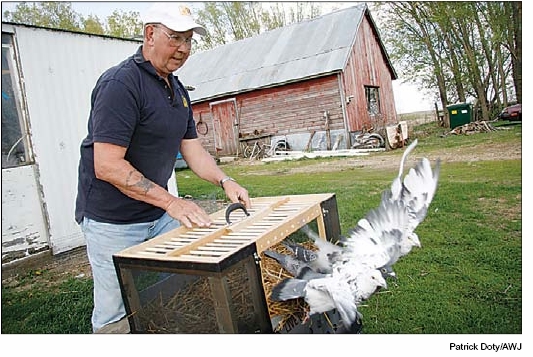
When we start road training, we start about 1/2 mile away from the loft, releasing the birds at this point 2-3 times. Remember, the routine is the same training, land, trap and peanuts.
We gradually increase the distance of our training tosses to 1, 5, 10, 20 miles. We stay at each location 3 times. On the third time at each location we are going to single toss each bird! This is the most important part of the young bird’s education. These single tosses force the bird to think on its own and not to rely on other birds to follow home. This is the first step in teaching the bird to be independent, and to build confidence in its own ability to navigate. Release each bird separately, about 10 minutes apart, and it must rely on its own homing skills. These single tosses are only made after a bird has been to the location at least 2 times with the group.
We agree that our birds must possess early physical maturity, and also, more importantly, mental ability to race and home successfully at a young age. The best way to teach this is to single toss the birds. When we train at short locations like 5, 10, 20 miles, these training tosses can be 2-3 times a day. It is better to have 2 ten mile tosses than 1 twenty mile toss for the birds to gain experience. Remember, feed and water is always available to the birds, and the routine is the same – train, land, trap, peanuts. If they know that the peanuts are waiting for them, you will have no problem with trapping.
When we look for locations to release your birds, always try to find large land marks that the birds can remember and see at great distances. After we reach the 40 mile toss location or the water, whichever comes first, all training tosses are single bird tosses. The birds must learn to fly independently from this point.
Our training tosses are now made as close to the water as possible: Varied NORTH and SOUTH OF OUR STRAIGHT LINE OF FLIGHT. We look for land markers as release points that the birds can use as they come off the water.
IMPORTANT: The birds are always sent to training tosses with a full tank of gas, fully fed and watered at all times. Hunger is the most destructive factor for our race birds. If a bird becomes hungry during a training toss or race, the bird develops memory loss, fatigue and loss of weight, all of which can be serious problems. Homing now becomes secondary to the need to survive, many times causing the loss of the bird.
If the birds fly south to north east, then they will probably head toward land first (east), then fly north. We should now single toss our birds south of the straight line of flight at tall land markers that they can recognize as they come off the water. These single tosses must be at least 10 minutes apart. If we release the birds too close together, they will not leave the area, but wait for the other birds and fly home together.
Single tossing creates and teaches mental maturity and intelligence. Many times the trainer overlooks this point. Outwardly many pigeons look good (physically), but it is what is inside that counts on race day (intelligence, confidence and independent thinking to lead, not follow the other birds.) It is important to recognize that a racing pigeon must and does navigate and think for itself independently, and not become a follower. Single tossing helps to educate the bird, and build its confidence to fly alone.
Another important area that is many times overlooked. is that the birds will eat and drink in the shipping crates that the local club uses. Successful trainers educate their young birds by obtaining a crate identical to the one used by the club. This crate is the same size, color, same location of feed and water, same release location and has the same opening as the club’s crate. They now school and educate the birds to eat and drink in these crates many times before the first race. They prepare the birds for what to expect on shipping night. This is a big advantage for the young birds to know where to look for food and water. We take no chances that the birds will find it on their own. We have prepared them in advance for this new experience.
In each situation, we have prepared our birds for new experiences in advance, all of our teaching and learning techniques help our birds to think and navigate for themselves independently from all the other birds in the race.
We must understand that we breed and train athletes. There is no difference between training and coaching a human or an animal athlete. They both need the athletic ability, proper training and coaching before the competition, excellent diets, good health and hygiene habits, plenty of rest, regular routine and a stress free environment to stay in condition and compete week after week to win the large prizes.
In the USA we have several types of races for both young birds and old birds. We place a great value on birds that compete successfully in a 1 bird derby or futurity race. Each loft enters its best bird (1 only) for this special race. The best against the best of each loft. The distances of the races range from 300-500 miles. These birds are special because they have intelligence, orientation, navigating ability, motivation, determination, desire, courage and heart. They fly as individuals or alone for distances of 300-500 miles with only their own ability. They are leaders not followers. The birds that fly these races successfully usually become excellent breeders and become very valuable in their owners’ breeding lofts. In each case the birds must prove themselves under difficult race conditions, after we provide them with the proper education.
Education: Important to Young Bird Training (Part 2 of 2) by Bob Prisco

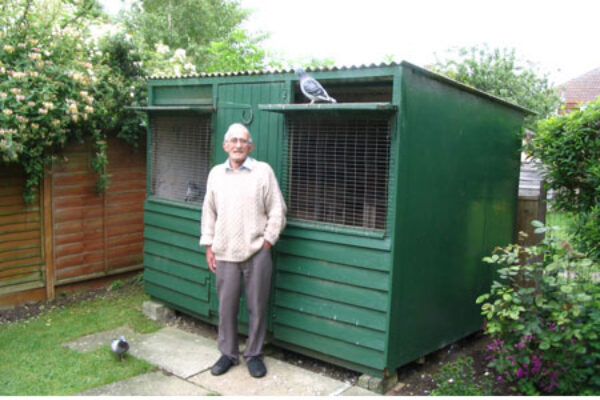

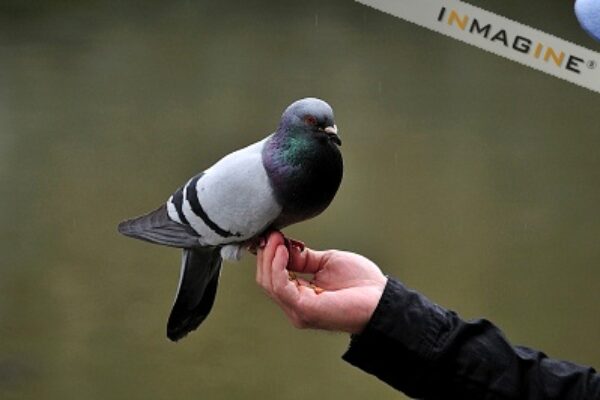
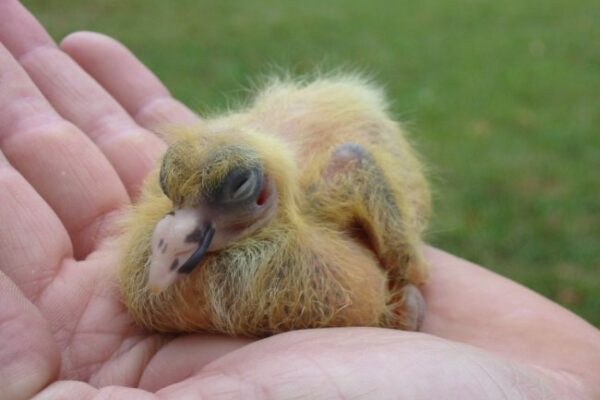
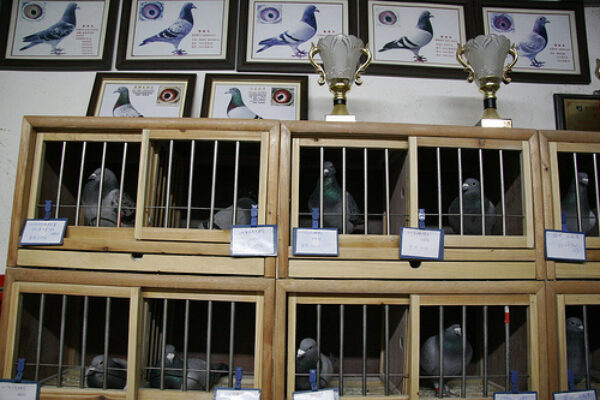


HI Chris.
I do not agrea with the tossing on a full Tank.?YOU NEED THEM TO COME HOME qUICK AND gO IN STRAIGHT AWAY. i START AT FIRST TOSS IS 20 KM 3 TIMES THEM 45KM THEM 120 10 OFF THEM. i DO NOT BABY THEM THEY HAVE TO EARN THERE PERCH AT MY LOFT. hARD TRAINING YOU WILL BE AT THE TOP ??.
tREV aUSTRALIA.
It is a fact that birds do not fly their best on a full tank. Their crop must be empty for them to give their best. Ask any athlete if is he or she works out after a full meal. None do. Every fancier has his way of training y/b. However, have you ever observed that most y/b losses are within 20 miles of their loft? To prevent this y/b on their first training toss should liberated 40 miles from their loft. Logically it appears daft, but realistically it works and above all it’s the results that count.
I always toss
my birds on a empty tank, when they return they GO In SO Quick i think thats the way to go . I also do not feed them on friday night day of boxing as it is only a 2-3 hour fly. It sounds Bad, have a go and try it.
something to remember, as you take your birds out for training tosses.take your birds out to each point 2 or 3 times, then before you go farther remember that your birds have to learn when and where to brake away from the pack, so take them either left or right of that point so that when you release they will circle and learn to find there breaking point and then head home. and then every time you go farther, do the same thing,by the time you get them out aways, they will know how to find that point, where ever it maybe and head home.they say pigeons are governed by magnitic poles but get in a air plane and fly the way your birds would, you can see for mile up there, road,trees,buildings, that what they see, not mags . as they fly they can see everything we cant see from the ground, “look theres our breaking point and our way home”……..good luck with your babies…
Hi Butch, if the birds use landmarks to find there way home what land marks do they see when there say 1000 km from home and have never been there before ? The only sense that i can make of the reason the pigeons homing instincts is the earths magnetic fields. Tests have been done using blind folds and birds find there way home and transmitters have been used to track birds and it shows they look for week spots in the magnetic fields. I have seen maps of the magnetic fields in my area and over 30 odd years of racing in the same area i have found places where the birds just will not pass over no matter where i release them and once i seen the maps i could see how the magnetic field is strong in those places which makes more sense about there ability to navigate home. Sure they may use eye sight when there close to home but really how far is there line of sight. I did read something years ago about what distance they supposedly can see but can’t remember what it was, 15kms springs to mind but i could be wrong. It might sound like im having a go at you im not its just something i feel strongly about and have noticed over the years of being the clock reader of our fed that when we fly certain lines the results seem to coincide with where the fields are on the line of flight. The birds will fly an extra 150 km when there only 30kms away from my area and have been tossed in those areas time and time again. Our combine or fed is spread out over 150 klm in a diamond shape and the results show far to often that the birds fly around the strong magnetic fields and the mid to long flyers clock first. We’ve tried for years to toss all along those areas that the birds should be able to use if its by landmarks and they just will not do it.
All the best with your birds Leigh
i ve had pigeons since I was 12 years old, being 63 now. I had many breeds of pigeons over the years. For the last few years having Homing pigeon. I have Sion Stassart out stock birds from th late Chas. Hieztman birds. I havent flow my birds in a few years as the cats seem to like them as much as i do. Same say that my birds arent good birds as I havent flow them to prove there worth. But I know the power of this blood line.I havent added to this blood much as I like the way these birds look. I say to all the fanciers that have juust come into the hobby, dont buy or try to buy the best , becuse if you lose one of these birds, you ll quit .Dont try to race your birds at first. Get to know them. I mean , you need to spent good time with your birds. Raise some young out of them. Learn to know the sex of them when you see them. know how to get the colors that you want. as these are goin g to be your birds. remember that happy birds will come home at nite after the have flown outside the loft…they will know you when you come into the loft.you ll learn to watch your young birds when they out, watch to see how they fly together.When you think they are ready, then learn to take them out to where you want to release. remember training birds is 50 % you and 50 % the birds. If you dont know your bird, you cant train them.Reemember, these bids didnt cost you a arm and a leg, but they are your birds. they know you and you know them. To me that is the key, they come home to the loft and they come home to you. Dont worry about winning. Leave that to the pros, thats is what they do, fly to win.if you cross all your “i” and dot all your ” T” , all your work will pay off for you.You want your birds to come home to you. and come home they will……remember its not how much money you have to spend to have agood team, its have much good time you have to spend to have a good team…..if they know you and you know them…they ll fly. not all homers are winners , and not all homers come back home, thats a hard lesson and I wouldnt spend a lot of money on a bird just to learn that lesson.I say find some one in your area who has birds and spend some time with them, ask qustion. some flyer will give you young birsds to start out, and you and those young birds can sart learning together…….Good luck with you new babies
HOW CAN I TELL THE SEX
can i buy a pair of your scion gonna use it as my foundation breeder
hoping & thanking you in advance regarding this matter i’m from the Philippines now living in Seattle
Hey all,
Just want to clarify real quick, Bob trains for Taiwan racing so these tips will have to be adapted for your location.
Thanks
-Chris
http://www.pigeonracingpigeon.com
What works best in terms of training youngsters after loft flying to hit or land only on the loft. This year 2010 was perhaps my worst. I could get half to do it 50% of the time but unlike the past, I couldn’t get 100% to do it 95% of the time. There is only one direction and one opening to hit the loft. I cut back the tree branches to offer the birds a better shot, but still I paid during the race season, especially on the short races. During the longer races, if the birds arrived separately they didn’t hesitate to land directly on the loft and run right in. No matter what I tried, getting them to land directly on the loft this season was a task. I’d put one or two OB out with the YB team and it wasn’t long before the OB adopted the bad habit instead of showing the youngsters how its done. I am open for new suggestions. I never used drops or coasters, but this YB season I am considering it as an option. If it is the same bird(s) I know to get rid of them, it’s hardly the same bird(s)each time.
The training methods around water would make more sense if we knew the racecourse he was training for.
Some very good advice,but for someone like me without a partner for the arrival of the birds at home, when single tossing, the first couple of birds would either eat up most or all of the peanuts before the others arrive denying them the treat to trap fast. How do i solve this problem.
thanks for our best comments that your experiece, pls guide me or how to learn our tbe best/secret to condition of pigeon when get start the race while the pigeon lost the race…!so what is the best way condition when the pigeon arrive,before and after race? thanks &more power.god bless
You can check out part 1 of this article here http://pigeonracingpigeon.com/2010/11/14/education-important-to-young-bird-training-part-1-of-2/